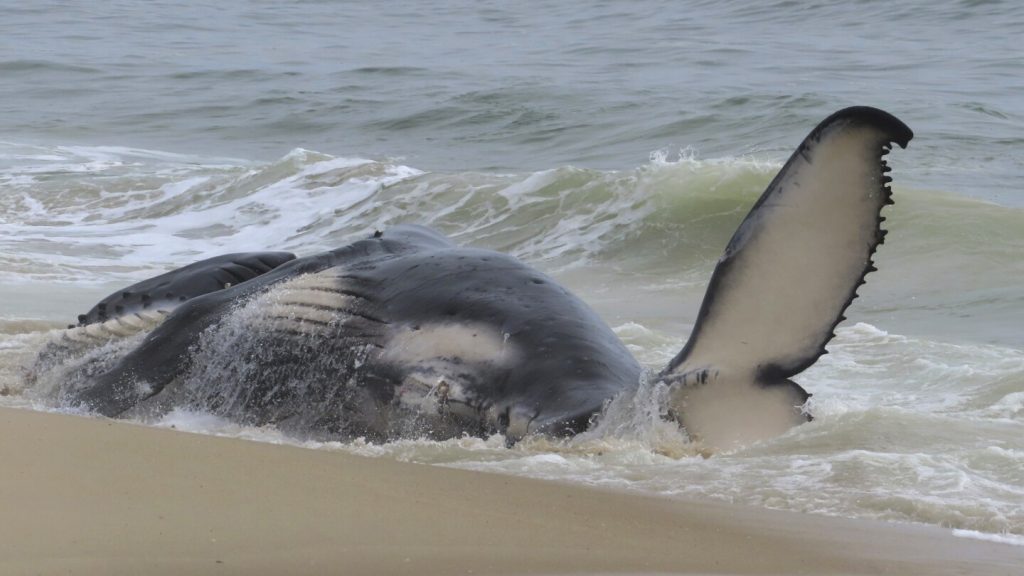A post-mortem examination of a whale that washed ashore on New Jersey’s Long Beach Island revealed that the animal had sustained multiple blunt force injuries, including a fractured skull and vertebrae. The Marine Mammal Stranding Center conducted the necropsy and found bruising around the head, fractures of the skull and cervical vertebrae, dislocated ribs, and a dislocated shoulder bone. These injuries are consistent with blunt force trauma, although further testing is needed to determine the exact cause of death. The center’s director, Sheila Dean, emphasized that they only report what they see and do not speculate on the cause of the injuries.
The whale’s cause of death is of particular interest due to ongoing controversies surrounding offshore wind power projects and their potential impact on whale populations along the East Coast. Despite concerns raised by opponents of offshore wind development, scientific agencies such as the National Oceanic and Atmospheric Administration, the Marine Mammal Commission, the U.S. Bureau of Ocean Energy Management, and the New Jersey Department of Environmental Protection have stated that there is no evidence linking preparation work for offshore wind farms to whale deaths. In 2024, there have been 16 large whale deaths on the East Coast, with various species affected, including humpback whales, North Atlantic right whales, sperm whales, minke whales, and a fin whale.
New Jersey’s first whale death of the year has sparked renewed skepticism from anti-offshore wind groups, such as Protect Our Coast NJ, regarding official explanations for these incidents. Some groups have drawn parallels between the distrust of official information about the COVID-19 pandemic and the skepticism surrounding the cause of whale deaths. Leading Light Wind, one of the companies behind the proposed wind farms off the New Jersey coast, emphasized their commitment to minimizing risks to wildlife and building the project in a way that protects the marine environment. They highlighted efforts to engage with maritime stakeholders, provide advance notices about survey activities, and invest in monitoring and mitigation initiatives to ensure the coexistence of the offshore wind industry and marine life.
The post-mortem examination of the whale also revealed evidence of past entanglement with fishing gear, although no gear was present when the whale washed ashore. Scars from a previous entanglement were found around the tail and pectoral flipper, indicating the whale had previously encountered fishing gear. The findings underscore the ongoing threats faced by marine mammals due to human activities such as vessel strikes and entanglement with fishing gear. Further investigation and collaboration between stakeholders will be crucial in addressing these challenges and protecting whale populations along the East Coast.


